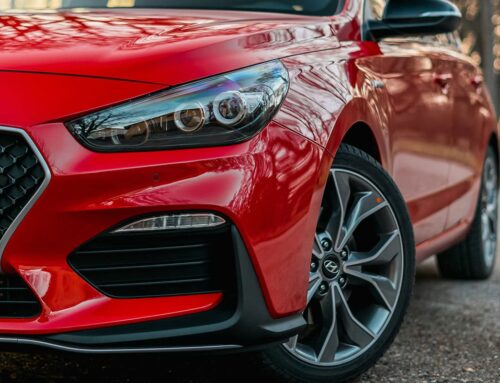THESE days, CO2 emissions are on everyone’s mind – but fleet managers in particular are faced with the responsibility of minimizing their businesses’ carbon footprints.
Of course, without first knowing how much CO2 your vehicles are churning out, you can’t measure how successful your efforts to cut back are – that’s why it’s so important to work out how big your carbon footprint actually is.
It may seem daunting, but with a few handy tools and a calculator close to hand, you can’t go wrong. Here’s how to use your vehicles’ fuel usage to calculate their CO2 emissions, in two simple steps…
Step 1: Monitor How Much Fuel Your Fleet is Using
First things first – you need to know how much fuel your fleet is using, either on a daily, weekly, or monthly basis (whatever time period you’d like to measure your emissions over), or over a set number of miles. There are three ways in which you can do this:
- Keep track of it manually. This is pretty self-explanatory – you’ll need to use clear communication and reporting to consistently record your drivers’ fuel usage in a given time period, or over a set number of miles. This, of course, is time consuming and the potential for human error to dismantle your efforts is rife – so we’d seriously advise looking into the following options instead…
- Use a fuel card program. Fuel cards are hands down the easiest way to track your business’ fuel consumption (and its fuel spend, too!). With a fuel card program in place, your drivers are given special cards – like credit cards – with which to buy fuel while out on the road (that’s right: say goodbye to collecting expense receipts and reimbursing them manually!). Your fuel card software will track all of these purchases, effortlessly keeping you abreast of how much gas or diesel your drivers are buying and using. Plus, there’s the added benefit of the personalized spending limits you’ll be able to invoke, too.
- Use a fleet management system. Not all, but some fleet management systems can monitor your fleet’s fuel usage, automatically recording those all-important gallons in a handy fuel management dashboard. Of course, these systems don’t always come cheap – but their myriad features are proven to help fleets supercharge productivity and significantly cut fuel spend, so you’re likely to see a big return on your investment (as well as a boost to your eco-friendly credentials).
Step 2: Calculate Each Vehicle’s CO2 Emissions
Once you’ve got your fuel consumption figures down, calculating roughly how much CO2 you’re releasing into the atmosphere is pretty easy – so long as you have a trusty calculator to hand.
What you need to remember is this: according to the EPA (Environmental Protection Agency), a typical passenger vehicle produces 8.887kg of CO2 per gallon of fuel burned. Commit that figure to memory, and you’ll be able to stay on top of your CO2 emissions no matter how much gas you’re guzzling.
For instance, if a car used 7 gallons of gas last week, then you can work out – simply by multiplying 8.887 by 7 – that it released approximately 62.21kg of CO2. Now, say your business’ fleet of vehicles burned through 100 gallons of gas last week. You can calculate that it produced roughly 888.7kg of CO2 in that time, because 100 x 8.887 = 888.7.
Got a fleet of trucks that’s powered by diesel, not gas? According to the EPA, a typical passenger vehicle produces 10.18kg of CO2 per gallon of diesel – so that’ll be the figure for you to use.
It goes without saying, though, that you should only use this calculation if your fleet consists of what the EPA defines as typical passenger vehicles – that’s cars, vans, trucks or utility vehicles that have two axles and four tires. If you run a fleet of larger freight trucks, your calculation is going to be a little different…
According to the EDF (Environmental Defense Fund), the average US freight truck releases 0.1618kg of CO2 per ton-mile (that’s for every ton of goods that’s carried over one mile). So, say one of your freight trucks carries 15 tons over 500 miles – that’s 7,500 ton-miles (because 15 x 500 = 7,500).
You can then estimate that the truck will emit 1,213.5kg of CO2, because 0.1618 x 7,500 = 1,213.5.
Now, you may be a little disconcerted by our use of words like “roughly”, “approximately”, and “estimate”. While the EPA and EDF’s figures are about as accurate as typical measures can be, the precise amount of CO2 that a vehicle actually produces (and we’re talking decimal points here) will depend on each vehicle’s engine, its fuel efficiency, and the quality of the fuel that is used.
Better fuel efficiency and higher quality fuel make for smaller carbon emissions.
For a fleet with more than a couple of vehicles, we can bet that all this calculating is starting to sound pretty time-consuming.
However, once you’ve got the initial calculations down, you can start to automate them – whether using a bit of custom-built software or a formula-heavy spreadsheet – making for an easier system over time.
Alternatively, there is another way – one that involves no math at all (on your part, anyway). Remember when we talked about fleet management systems? Well, a small handful of them can go one step further and use your fleet’s fuel consumption data to calculate its CO2 emissions, too.
What’s Next?
Now that you know how to calculate your fleet’s CO2 emissions, it’s time to commit to shrinking them.
Make sure your drivers take fuel-efficient routes, stop them from wasting gas on idling and speeding, keep your vehicles in tip top condition to ensure they aren’t burning more fuel than they need to, and – if you haven’t already – sign up to that fuel card program for complete visibility and control over your drivers’ fuel spend and usage. Good luck!







Leave A Comment